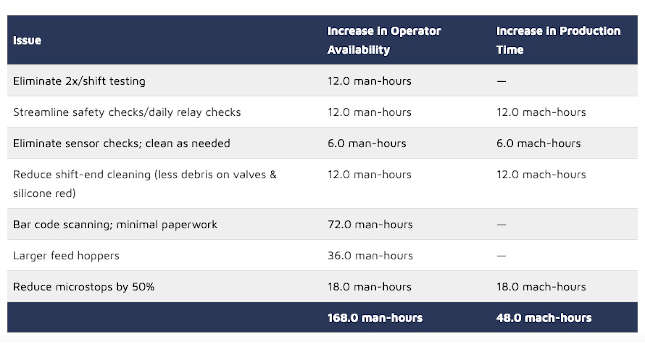When it comes to managing all aspects of maintenance, capital expenditures (CAPEX) remains one of the key priorities.

When it comes to managing all aspects of maintenance, capital expenditures (CAPEX) remains one of the key priorities. CAPEX or improvements may be needed to increase an asset’s function through the installation if items such as variable frequency drives (VFDs) to energy-efficiency lighting or other value-adding improvements.
The approaches to tracking, updating, and reporting on CAPEX can vary greatly from organization to organization: accounting or enterprise resource planning (ERP) systems, project management software, homegrown systems, and even spreadsheets. The ongoing management of CAPEX maintenance should require more than the options typically found today.
Consolidate to succeed
First, stop using any programs that aren’t performing as needed. In its essence, CAPEX is a form of project management which impacts assets from the general ledger that are routinely maintained and relied upon for production. Before adding another step or software to the mix, look inward to a CMMS or EAM solution.
The CMMS already serves as the asset’s "system of record." Detailed information about assets such as are conditions, criticality, inspections, and reports are accessible within this solution. By utilizing this inherent data in conjunction with the CMMS’ workflow capabilities, maintenance can follow corporate CAPEX business processes in an efficient and effective fashion.
The power of using an advanced CMMS for major expenditure tracking comes from the fact that each employee can have access to their relevant parts of the process.
Configuring the process
Let’s say that all non-major investments greater than $3,000 USD must go through a capital authorization request policy. Each request must be routed through several layers of approvals, including the business unit manager, IT and supply chain directors, and the vice president of finance. For non-major investments of $50,000 USD and above, there is an additional approval layer that includes the chief financial officer (CFO).
Now let’s say that a piece of equipment presents a safety risk to personnel, which has been ascertained based on safety reports compiled in the CMMS. It has a replacement cost of $75,000 USD. The CAPEX project may be created within the CMMS with a number of required or optional attributes, such as:
- Project ID or number
- Priority
- Status
- Related site or cost center
- Total budget
- Total cost
- Origination date
- Description.
From there, the approval workflow may be defined based on project stage and the order in which each approval must be received. The CAPEX project may be assigned to particular users for accountability and ownership. Economic analysis and justification files, quotes, warranties, and other documentation can be added at any point during the process.
Throughout the project, the maintenance manager may associate work orders for disposal work related to the unsafe equipment. Relevant purchase orders for parts and service/installation work may be included, as well as, audit and inspection programs to ensure that the new equipment adheres to the same (or more rigorous) standards as the replaced equipment. Finally, a log of user activity and approval status is tracked for full visibility into project modifications and authorizations.
CMMS integration with other systems, such as ERP or accounting software, can reduce or eliminate duplicate data entry and communication issues while ensuring corporate policies remain in effect consistently throughout an organization. Perhaps most important, CMMS with CAPEX capabilities give another opportunity to bring teams closer through various Specialized Users roles from finance and IT roles to business unit managers and supply chain personnel.
Greater user access across one CMMS platform can save time and effort while preventing errors and mismanagement. In fact, the project management institute credits highly effective communicators with projects delivered on time and within budget. When it comes to capital expenditures, a well-designed CMMS can position teams for project success.
– This article originally appeared on the Smartware Group blog. Smartware Group is a CFE Media content partner.



